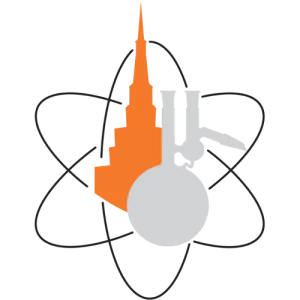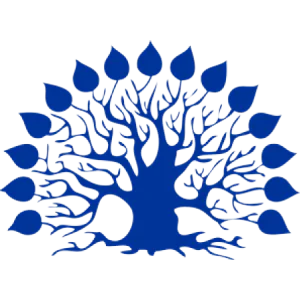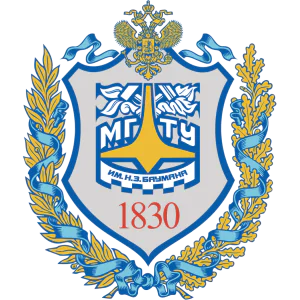Biorecognition Layer Based On Biotin-Containing [1]Benzothieno[3,2-b][1]benzothiophene Derivative for Biosensing by Electrolyte-Gated Organic Field-Effect Transistors
Polina A Shaposhnik
1, 2
,
Elena Zavyalova
2
,
Askold A. Trul
1
,
Vadim Krylov
3
,
Elena V. Agina
1
,
Publication type: Journal Article
Publication date: 2022-03-31
scimago Q1
wos Q1
SJR: 1.921
CiteScore: 14.5
Impact factor: 8.2
ISSN: 19448244, 19448252
PubMed ID:
35357127
General Materials Science
Abstract
Requirements of speed and simplicity in testing stimulate the development of modern biosensors. Electrolyte-gated organic field-effect transistors (EGOFETs) are a promising platform for ultrasensitive, fast, and reliable detection of biological molecules for low-cost, point-of-care bioelectronic sensing. Biosensitivity of the EGOFET devices can be achieved by modification with receptors of one of the electronic active interfaces of the transistor gate or organic semiconductor surface. Functionalization of the latter gives the advantage in the creation of a planar architecture and compact devices for lab-on-chip design. Herein, we propose a universal, fast, and simple technique based on doctor blading and Langmuir-Schaefer methods for functionalization of the semiconducting surface of C8-BTBT-C8, allowing the fabrication of a large-scale biorecognition layer based on the novel functional derivative of BTBT-containing biotin fragments as a foundation for further biomodification. The fabricated devices are very efficient and operate stably in phosphate-buffered saline solution with high reproducibility of electrical properties in the EGOFET regime. The development of biorecognition properties of the proposed biolayer is based on the streptavidin-biotin interactions between the consecutive layers and can be used for a wide variety of receptors. As a proof-of-concept, we demonstrate the specific response of the BTBT-based biorecognition layer in EGOFETs to influenza A virus (H7N1 strain). The elaborated approach to biorecognition layer formation is appropriate but not limited to aptamer-based receptor molecules and can be further applied for fabricating several biosensors for various analytes on one substrate and paves the way for "electronic tongue" creation.
Found
Nothing found, try to update filter.
Found
Nothing found, try to update filter.
Top-30
Journals
|
1
2
3
4
5
|
|
|
Russian Chemical Bulletin
5 publications, 16.67%
|
|
|
Advanced Materials
3 publications, 10%
|
|
|
Journal of Materials Chemistry C
3 publications, 10%
|
|
|
Chemosensors
2 publications, 6.67%
|
|
|
Biosensors and Bioelectronics
2 publications, 6.67%
|
|
|
Russian Chemical Reviews
2 publications, 6.67%
|
|
|
Polymers
1 publication, 3.33%
|
|
|
Organic Electronics
1 publication, 3.33%
|
|
|
Critical Reviews in Analytical Chemistry
1 publication, 3.33%
|
|
|
Russian Journal of Organic Chemistry
1 publication, 3.33%
|
|
|
Heliyon
1 publication, 3.33%
|
|
|
ACS applied materials & interfaces
1 publication, 3.33%
|
|
|
Journal of Materials Chemistry B
1 publication, 3.33%
|
|
|
ACS Sensors
1 publication, 3.33%
|
|
|
Science China Chemistry
1 publication, 3.33%
|
|
|
Journal of Colloid and Interface Science
1 publication, 3.33%
|
|
|
Chemical Research in Chinese Universities
1 publication, 3.33%
|
|
|
1
2
3
4
5
|
Publishers
|
1
2
3
4
5
6
7
|
|
|
Springer Nature
7 publications, 23.33%
|
|
|
Elsevier
6 publications, 20%
|
|
|
Royal Society of Chemistry (RSC)
5 publications, 16.67%
|
|
|
MDPI
3 publications, 10%
|
|
|
Wiley
3 publications, 10%
|
|
|
Autonomous Non-profit Organization Editorial Board of the journal Uspekhi Khimii
2 publications, 6.67%
|
|
|
American Chemical Society (ACS)
2 publications, 6.67%
|
|
|
Taylor & Francis
1 publication, 3.33%
|
|
|
Pleiades Publishing
1 publication, 3.33%
|
|
|
1
2
3
4
5
6
7
|
- We do not take into account publications without a DOI.
- Statistics recalculated weekly.
Are you a researcher?
Create a profile to get free access to personal recommendations for colleagues and new articles.
Metrics
30
Total citations:
30
Citations from 2024:
19
(63.34%)
Cite this
GOST |
RIS |
BibTex |
MLA
Cite this
GOST
Copy
Poimanova E. Y. et al. Biorecognition Layer Based On Biotin-Containing [1]Benzothieno[3,2-b][1]benzothiophene Derivative for Biosensing by Electrolyte-Gated Organic Field-Effect Transistors // ACS applied materials & interfaces. 2022. Vol. 14. No. 14. pp. 16462-16476.
GOST all authors (up to 50)
Copy
Poimanova E. Y., Shaposhnik P. A., Anisimov D. S., Zavyalova E., Trul A. A., Skorotetcky M. S., Borshchev O. V., Vinnitskiy D. Z., Polinskaya M. S., Krylov V., Nifantiev N. E., Agina E. V., Ponomarenko S. A. Biorecognition Layer Based On Biotin-Containing [1]Benzothieno[3,2-b][1]benzothiophene Derivative for Biosensing by Electrolyte-Gated Organic Field-Effect Transistors // ACS applied materials & interfaces. 2022. Vol. 14. No. 14. pp. 16462-16476.
Cite this
RIS
Copy
TY - JOUR
DO - 10.1021/acsami.1c24109
UR - https://pubs.acs.org/doi/10.1021/acsami.1c24109
TI - Biorecognition Layer Based On Biotin-Containing [1]Benzothieno[3,2-b][1]benzothiophene Derivative for Biosensing by Electrolyte-Gated Organic Field-Effect Transistors
T2 - ACS applied materials & interfaces
AU - Poimanova, Elena Y
AU - Shaposhnik, Polina A
AU - Anisimov, Daniil S
AU - Zavyalova, Elena
AU - Trul, Askold A.
AU - Skorotetcky, Maxim S.
AU - Borshchev, Oleg V.
AU - Vinnitskiy, Dmitry Z
AU - Polinskaya, Marina S.
AU - Krylov, Vadim
AU - Nifantiev, Nikolay E.
AU - Agina, Elena V.
AU - Ponomarenko, Sergey A.
PY - 2022
DA - 2022/03/31
PB - American Chemical Society (ACS)
SP - 16462-16476
IS - 14
VL - 14
PMID - 35357127
SN - 1944-8244
SN - 1944-8252
ER -
Cite this
BibTex (up to 50 authors)
Copy
@article{2022_Poimanova,
author = {Elena Y Poimanova and Polina A Shaposhnik and Daniil S Anisimov and Elena Zavyalova and Askold A. Trul and Maxim S. Skorotetcky and Oleg V. Borshchev and Dmitry Z Vinnitskiy and Marina S. Polinskaya and Vadim Krylov and Nikolay E. Nifantiev and Elena V. Agina and Sergey A. Ponomarenko},
title = {Biorecognition Layer Based On Biotin-Containing [1]Benzothieno[3,2-b][1]benzothiophene Derivative for Biosensing by Electrolyte-Gated Organic Field-Effect Transistors},
journal = {ACS applied materials & interfaces},
year = {2022},
volume = {14},
publisher = {American Chemical Society (ACS)},
month = {mar},
url = {https://pubs.acs.org/doi/10.1021/acsami.1c24109},
number = {14},
pages = {16462--16476},
doi = {10.1021/acsami.1c24109}
}
Cite this
MLA
Copy
Poimanova, Elena Y., et al. “Biorecognition Layer Based On Biotin-Containing [1]Benzothieno[3,2-b][1]benzothiophene Derivative for Biosensing by Electrolyte-Gated Organic Field-Effect Transistors.” ACS applied materials & interfaces, vol. 14, no. 14, Mar. 2022, pp. 16462-16476. https://pubs.acs.org/doi/10.1021/acsami.1c24109.

























